Well, congratulations! If you’re interested in learning more about building a strong online presence, you’ve come to the perfect place. Anyone can write a blog or set up a website these days. In this thick jungle of the internet, how will your blog or website stand out from the rest? How will you get people to come to your site, and how much money will you make if they do? This is why you need to read this post in full.
Here you will find the top 12 SEO tips to give a makeover to your blog or website. Beginners will benefit greatly from reading this essay, which has been designed just for them. Professionals will still have a piece of the action since we’ll talk about the newest strategies for the year 2022.
What is Search Engine Optimization – SEO?
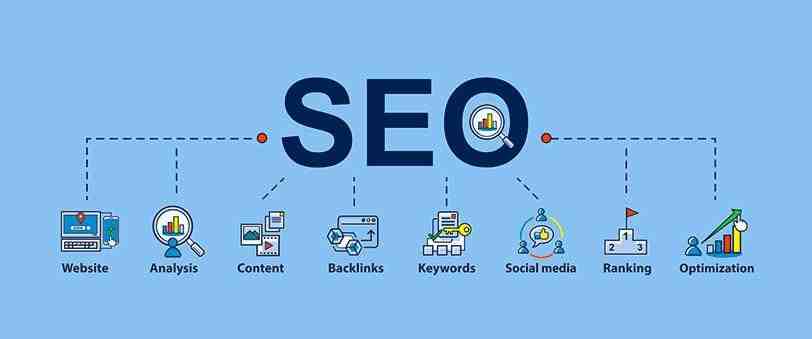
SEO stands for Search Engine Optimization. SEO is the practice of enhancing a website’s content to appear higher on the search engine results page (SERP) and generate more traffic to your site. It involves a set of practices and strategies done organically or in an unpaid manner.
Why is SEO important?

You can’t learn about a product or service online without searching. You realize how crucial it is for you to remain at the top of search engine results pages in this era of massive data and an oversaturated digital environment (SERP). According to Google’s algorithms, only the finest online content is ranked at the top of a search engine results page (SERP). The best-crafted website in that sector is delivered to users. Consider how many more customers you might attract if your website had an advantage over all of your rivals.
SEO Practices – the top 12 of 2022
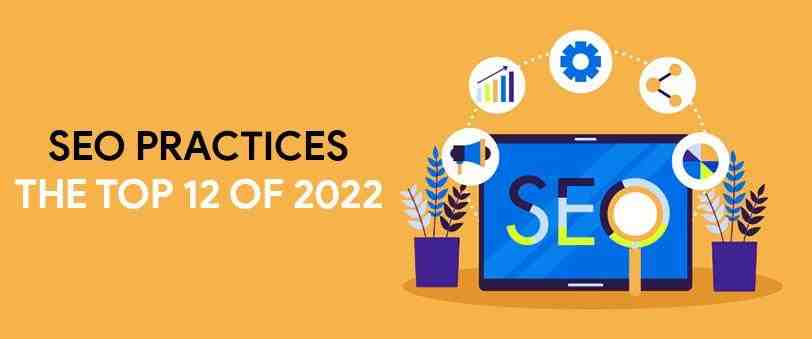
There are various techniques to optimize web content, so let us understand the top 12 tips that would be of immense use in 2022.
THE TIPS
- Content Conquers
- Technical SEO
- User Experience
- User Search Intent
- Voice Search
- Featured Snippets
- Link Building
- Video Content
- Update Old content
- Off-Page SEO
- Lower Bounce Rate
- Site Audit
1. Content Conquers
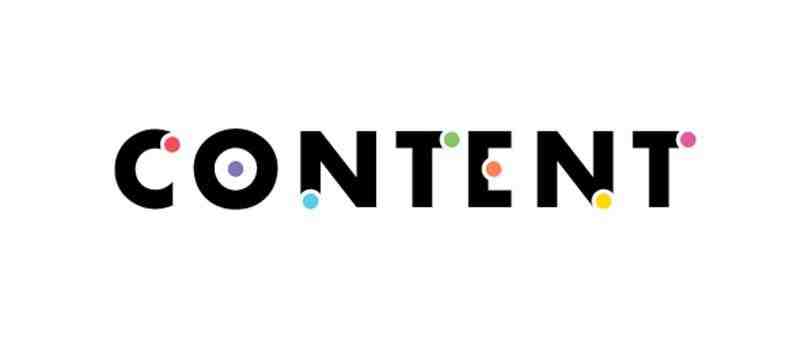
First and foremost, content is king.
Of course, adding material to a website is a given these days. It might be text, audio, video, infographics, or photos in digital form. We are going to focus on literature now. Literature means anything that is written.
Google has an important factor called E-A-T, Expertise, Authoritativeness, and Trustworthiness to position the website in the SERP. OBVIOUSLY, your E-A-T score has to be high to be in the first five or seven places.
What determines the E-A-T?
Expertise – It denotes the author’s trustworthiness and knowledge in the field. Authenticity is essential when there is a lot of stuff accessible on the internet. Because of this, the author should be an expert in the field. Include a brief biography of the author to accomplish this goal.
Authoritativeness – A website’s authority may be measured by looking at how many backlinks, internal and external, it has and how many people connect to it. The primary content, website, and author all have a role in this.
Trustworthiness – Both of the previous indicators combine to form this one: trustworthiness. Your material is considered trustworthy by Google if it meets the following two criteria.
This is more pertinent to the YMYL sub-category. Finance, health, lifestyle, and happiness websites fall under the group of websites that significantly influence users’ judgments about whether or not to read them.
All the factors discussed above come under on-page SEO.
2. Focus on Technical SEO

This tip encompasses the following:
- Website security
- Mobile Optimization
- Loading Speed
- Unique content and working links
Security – Google prefers websites that use HTTPS – HyperText Transfer Protocol Secure certificate – over those that don’t have it. Any data sent between a user and the website is protected by this method.
Mobile Optimization – To optimize for mobile devices, In 2019, 67 percent of all Google searches were conducted on mobile devices, while 87 percent of smartphone users do searches daily. As a result, be certain that your website is compatible with mobile devices.
Loading Speed – A study says that when your website takes an extra 2 seconds to load, the bounce rate increases by 103%. This is one of the important factors that Google looks for while ranking.
Unique Content – Plagiarism and faulty links are also grounds for the removal of material. Broken links cause poor user experience. As a result, repair any broken links you see in the Site Audit Report. You have the option of either updating or deleting them.
3. User Experience – the key

We’ve paid enough attention to what we’re saying. UX – user experience – is now the emphasis. Google’s primary goal is to ensure that its customers get the greatest possible internet experience possible. In June 2021, Google introduced a ranking upgrade known as the Core Web Vitals, which emphasizes the importance of the User Experience when determining a site’s position in search results.
Core Web Vitals has three parameters or pointers for ranking –
- Loading speed of the website
- Collaboration & Responsiveness
- Stability
So make sure your website is simple and easy for the users to navigate. Ads, unneeded clutter, the length of the page, and graphics are all things to keep an eye out for. Opt for HTTPS certificate.
4. User Search Intent

Keep in mind that your content and keywords must be relevant to the user’s search query. Decide on the terms and phrases you’ll use in your content based on what people search for. Consider yourself a member of the public doing an internet search for a product. Google pays you if your content has keywords that appear in a large number of searches.
Probably there could be 4 categories based on which you can coin the keywords:
- Information – How-tos, guides, and tutorials are examples of information people search for while looking for solutions to particular queries.
- Navigation – When users look for specific site or page
- Transaction – When completing a deal or making a sale.
- Commercial – For getting information on specific brands or services
5. Voice Search

According to current projections, voice search is expected to influence SEO tactics by 2022 significantly. This is because 65% of people aged 25 to 50 use a voice-enabled gadget regularly. We already have Alexa and Siri, and by the end of 2022, voice-enabled devices are expected to have sold $40 billion.
To improve the ranking of your website for voice search, try the following steps – Improve the Domain authority, keep the content conversational, casual, simple, and Incorporate long-tail keywords to the questions like What, When, Why, Where, Who etc., that sound natural.
6. Featured Snippet

Featured snippets provide a brief summary of the content to address a user’s question. It appears in position zero of the SERP. Featured Snippets are often definitions, tables, lists, and other types of content. It’s a great way to increase your website’s search engine results and content marketing exposure. According to Search Engine Land, Featured Snippets get 8% of all hits.
There are three types of Featured Snippets:
- Text snippets
- Table snippets
- List snippets
Text Snippets – These give definitions to “What is” sort of questions. The answers are direct, short, and precise.
Table Snippets – Here, Google extracts data from a page and presents it as a table.
List Snippets – Usually a set of steps that answer “How to” queries are given here.
Additionally, there could be video snippets also.
To use Google’s Featured Snippets, look for long-tail keywords and voice search queries in high demand by the search engine. Finding out what a user is looking for is the next step. Doing it manually or with the help of tools like Ahrefs, SEMrush, etc., is an option. Create material that is more targeted to the user’s search intent. One should format featured snippets properly. Do not be afraid to use various formatting tools in your material.
7. Link Building

Another trend guaranteed to take up in 2022 is ethical link building. Google frowns against link schemes of any kind. Google penalizes non-organic link development strategies, such as reciprocal links and purchased links. Get better backlinks and establish better internal linkages to improve your search engine rankings. Unique, high-quality, and original material is once again essential. This kind of material should be shared widely throughout various social media channels as soon as possible. When it comes to internal links, aim to connect 2-6 pages on your website. Link text should include keyword-rich anchor text. It would help if you sought to have 5 to 8 connections to high-quality websites for external links. As a result, this indicates your website’s authority and trustworthiness to Google.
8. Video Content

Compared to the written content on websites, 41% more traffic is driven to websites with video content. More than four times as many people visit video-rich websites than video-only ones. This results in a 157 percent rise in SERP ranks.
When it came to video content, YouTube was the only option. But today, because of apps like Tiktok and Snapchat, people are watching more videos than ever. As a result, you should aim to include videos on your sites, and you may even try to turn your blog entries into videos. Featured Snippets may also include tutorials, how-tos, product demonstrations, and other types of video content.
This will catch Google’s eye, but it will also keep your customers on your website for a more extended period. This, in turn, raises the site’s search engine rating.
9. Updating Old Content

It’s a good idea to update and refresh your website’s existing material and upload new stuff. Otherwise, the SEO strategies may not work since some of the previous material would become obsolete and redundant. We may gain SEO best practices, reader loyalty, and backlinks by repurposing existing material. One should update blogs every four months at most.
Look for material that needs to be changed first, and then eliminate the rest of it. It is essential to do keyword research, analyze user intent, adjust H1, and H2 tags, update the content and optimize the speed during the content updation process.
10. Off-Page SEO

We’ve spoken a lot about on-page SEO, but SEO also has to be done off-page, as you probably already know. A few off-page SEO tactics to keep an eye out for –
- To begin with, let’s discuss ‘Google My Business. If you want to take your company to the next level, you must have a Google My Business page. Include the business’s name, address, phone number, and website URL here. With this feature, you have more control over how your company shows across Google’s various platforms, such as Maps and Search… Google will better match your company with the user’s intent if you optimize your My Business profile.
- Next comes the Social Media platforms – Maintain active social media presences. To keep your target audience interested, you should participate on Pinterest and other social media networks. Participate as a Guest Podcaster as well. LinkedIn, too, offers a publishing platform called LinkedIn Pulse.
- Miscellaneous tasks – Be a part of newsletters, look for events that you can sponsor, and leave frequent comments on blogs to build connections, among other things.
11. Lower the bounce rate
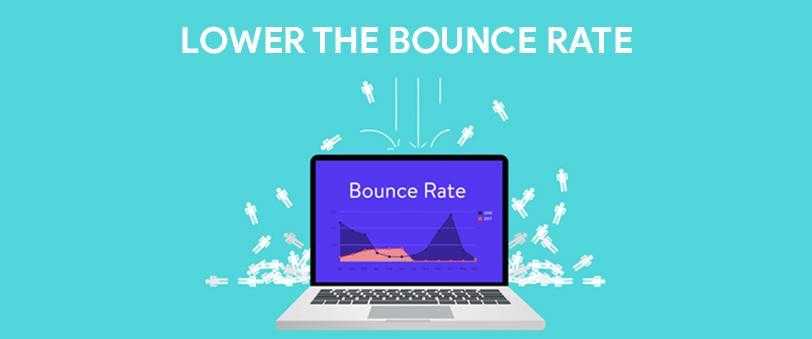
Bounce rate is the percentage of visitors that click on your website and then immediately return to the search engine results page (SERP). It is recommended that the bounce rate ranges between 26 and 40 percent—the lower the bounce rate, the better for search engine optimization. Visitors who spend more time reading your material are more likely to become leads.
To keep people on your website for a more extended amount of time, all you need to do is provide them with adequate content. Incorporate a table of contents with hyperlinks; create in-depth blogs; and use visual strategies such as movies, infographics, and other pictures.
12. Site Audit
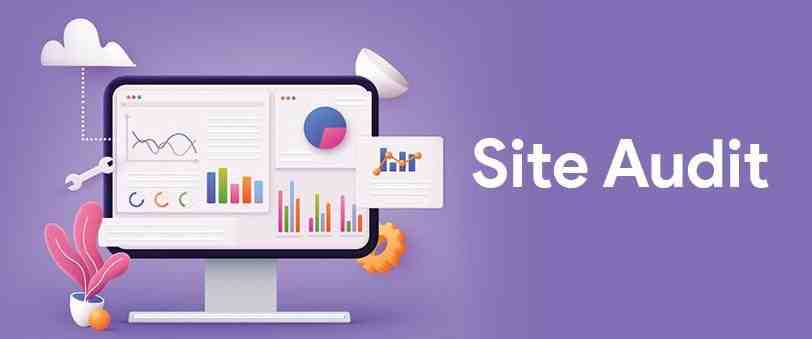
You’ll need to do a site audit to improve your website’s search engine rankings now and again. You might think of site auditing as a thorough website cleaning, checking for broken links, redirect points and missing graphics. One can do this manually; however, tools like Semrush or Ahrefs make it easier when dealing with a large website. In addition, they provide suggestions on how to address the vast majority of the problems. Seo concerns like HTML tags and content quality may be quickly analyzed using this tool.
As you’ll see in the statistics, on-page enhancements alone have been responsible for 32% of organic traffic. If you periodically evaluate your site and make adjustments, there is a reasonable probability that your website will rise in the search engine results.
Keep this page handy by saving it to your computer’s favorites. As a result, maybe you have a better grasp of the SEO practices necessary in the New Year. Please let me know if these pointers were helpful to you.
We shall come out with another informative article shortly.
Thank you for reading.
